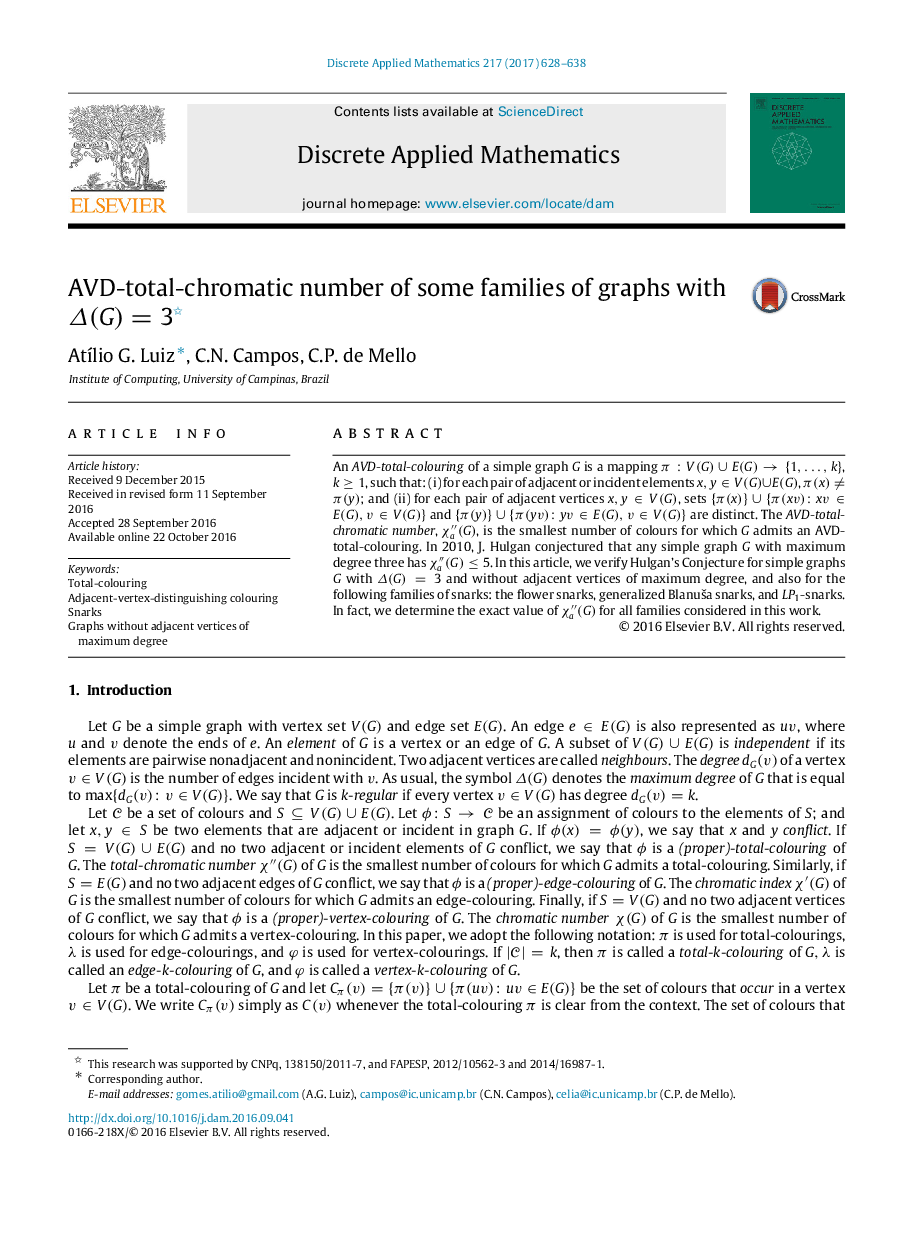| Article ID | Journal | Published Year | Pages | File Type |
|---|---|---|---|---|
| 4949768 | Discrete Applied Mathematics | 2017 | 11 Pages |
Abstract
An AVD-total-colouring of a simple graph G is a mapping Ï:V(G)âªE(G)â{1,â¦,k}, kâ¥1, such that: (i) for each pair of adjacent or incident elements x,yâV(G)âªE(G), Ï(x)â Ï(y); and (ii) for each pair of adjacent vertices x,yâV(G), sets {Ï(x)}âª{Ï(xv):xvâE(G),vâV(G)} and {Ï(y)}âª{Ï(yv):yvâE(G),vâV(G)} are distinct. The AVD-total-chromatic number, Ïaâ³(G), is the smallest number of colours for which G admits an AVD-total-colouring. In 2010, J. Hulgan conjectured that any simple graph G with maximum degree three has Ïaâ³(G)â¤5. In this article, we verify Hulgan's Conjecture for simple graphs G with Î(G)=3 and without adjacent vertices of maximum degree, and also for the following families of snarks: the flower snarks, generalized BlanuÅ¡a snarks, and LP1-snarks. In fact, we determine the exact value of Ïaâ³(G) for all families considered in this work.
Keywords
Related Topics
Physical Sciences and Engineering
Computer Science
Computational Theory and Mathematics
Authors
AtÃlio G. Luiz, C.N. Campos, C.P. de Mello,
